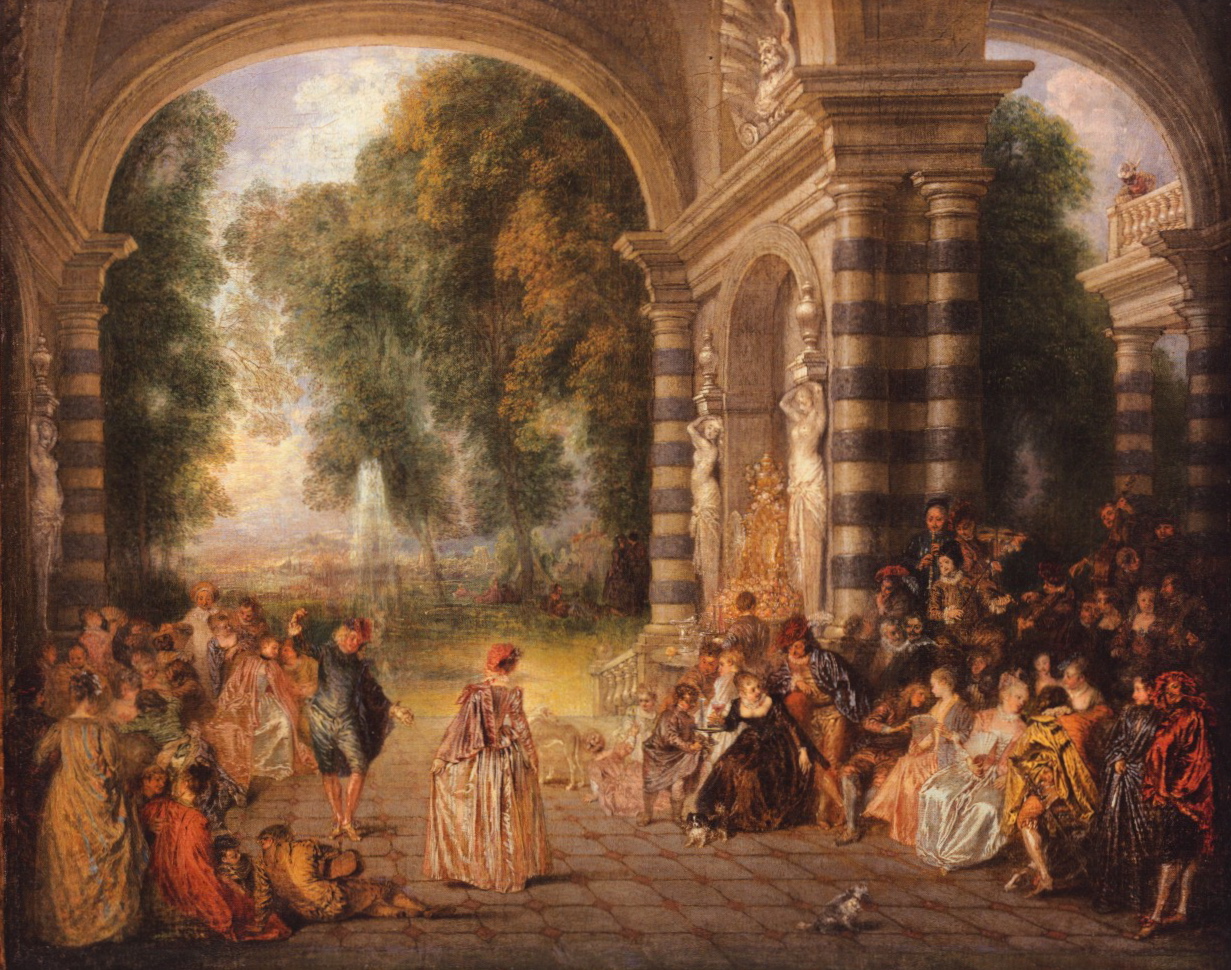 Jean-Antoine Watteau, Les Plaisirs du Bal, c. 1717
Jean-Antoine Watteau, Les Plaisirs du Bal, c. 1717
Oil on canvas
Bourgeois Bequest, 1811, Dulwich Picture Gallery
I recently had the pleasure of spending time with Jean-Antoine Watteau‘s (1684-1721) Les Plaisirs du Bal, which was on view at the Frick Collection while on loan from the Dulwich Picture Gallery. This is the most celebrated of Watteau’s series of poetic paintings which he called fêtes galantes.
John Constable said about Les Plaisirs du Bal that it looked like it was:
“painted in honey: so mellow, so tender, so soft and so delicious.”
In Les Plaisirs de Bal, sumptuously-dressed revelers, many in costume or fancy dress, converse, dance and flirt in a lovely, imagined park. As a contrast to court painting, Watteau’s idyll has a relaxed, informal air—it portrays an earthly paradise. This intensely romantic painting about love, the various stages of courtship and the joys of intimacy, is so potent because Watteau evokes many moods at once—languorous sensuality, the lighthearted gaiety of youth, the pleasures of music and dance—all embellished with a touch of melancholy and irony.
Watteau’s rich patrons liked to see themselves portrayed as benevolent figures in harmony with nature. The opulent setting, which depicts a Renaissance villa with caryatids and a fountain in a lush parkland, borrows much of its landscape ideas from paintings by Rubens and Veronese, and updates the genre to the 18th century. Watteau’s fêtes galantes, inspired by ballet and commedia dell’arte, are at the same time idyllically bucolic and extremely theatrical.
Even though Watteau’s Les Plaisirs du Bal takes place in daylight, it brought to my mind this dreamy, evocative poem by poet Paul Verlaine, which was written in the 18th-century style, and inspired by Watteau’s fêtes galantes.
Clair de Lune
Votre âme est un paysage choisi
Que vont charmant masques et bergamasques,
Jouant du luth, et dansant, et quasi
Tristes sours leurs déguisements fantastiques.Toute en chantant sur le mode mineur
L’amour vainqueur et la vie opportune,
Ils n’ont pas l’air de croire à leur bonheur
Et leur chanson se mêle au claire de lune,Au calme clair de lune triste et beau,
Qui fait rêver les oiseaux dans les arbres
Et sangloter d’extase les jets d’eau,
Les grands jets d’eau sveltes parmi les marbres.—from Paul Verlaine’s Fêtes Galantes, 1869
(Moonlight
Your soul is a chosen landscape
Where charming masqueraders and revelers go,
Playing the lute, and dancing, and almost
Sad beneath their fantastic disguises.All sing in a minor key
Of victorious love and the opportune life,
They do not seem to believe in their own happiness
And their song mingles with the moonlight,With the still moonlight, sad and beautiful,
Which sets the birds dreaming in the trees
And the fountains sobbing in ecstasy,
The tall slender fountains among marble statues.)